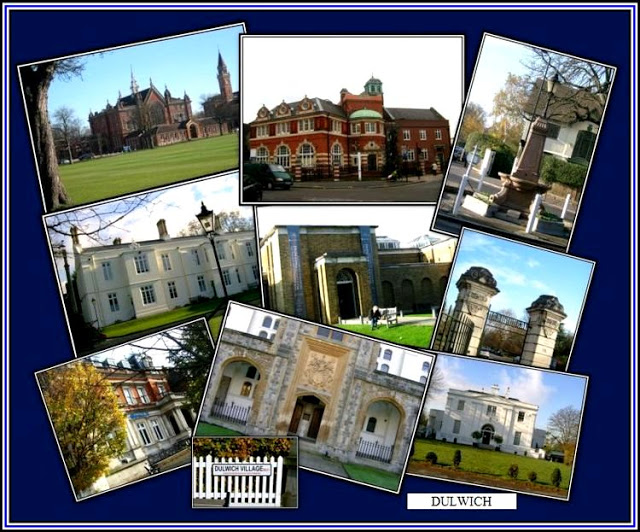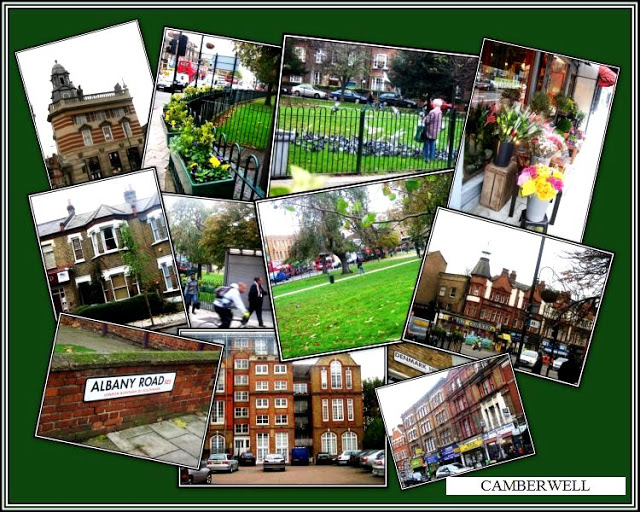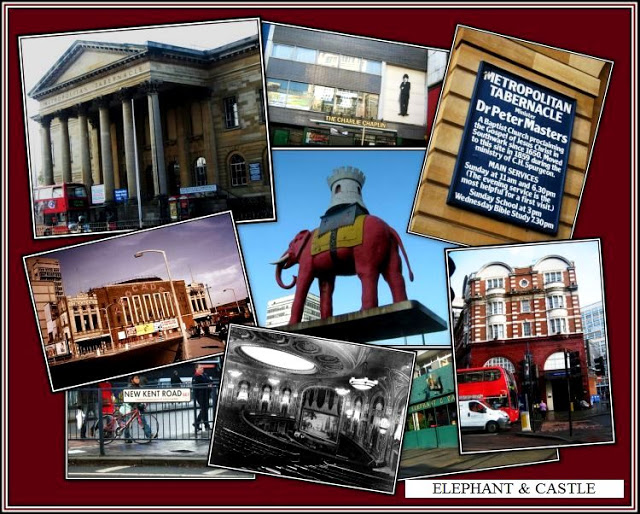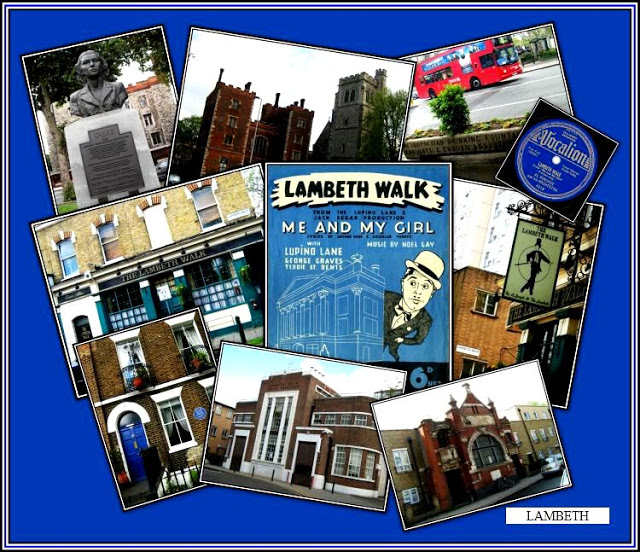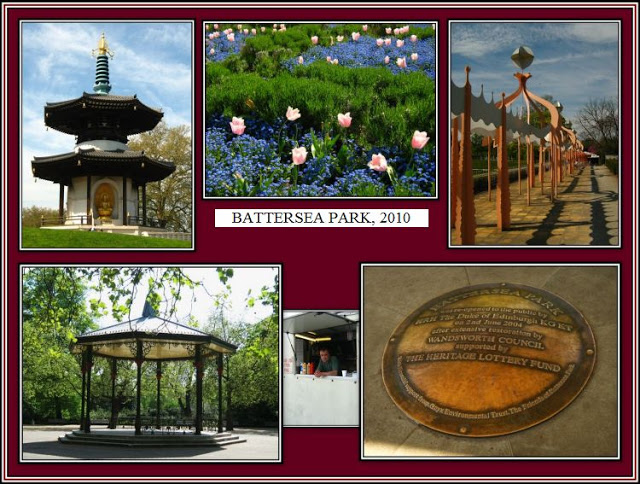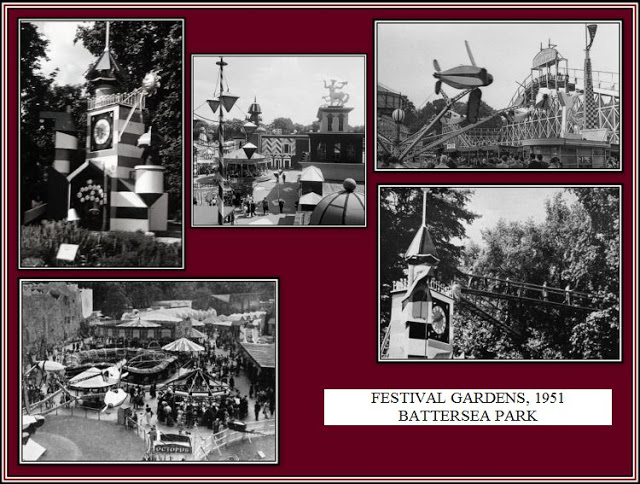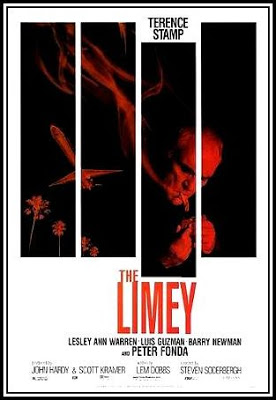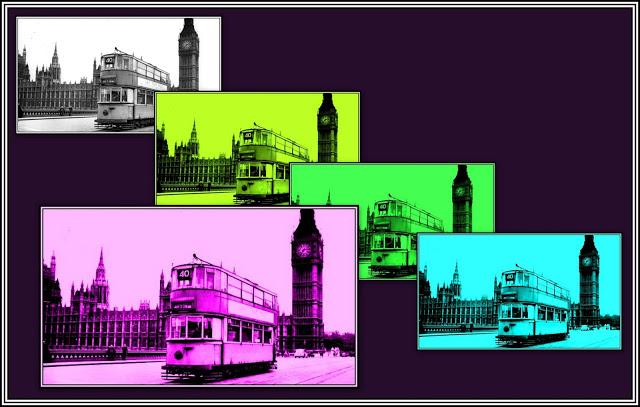THE ODEON ISLEWORTH
DIDN’T THIS BUILDING USED TO BE A CINEMA?
PART FIVE: THE ROAD TO RICHMOND – CROSSING THE RIVER
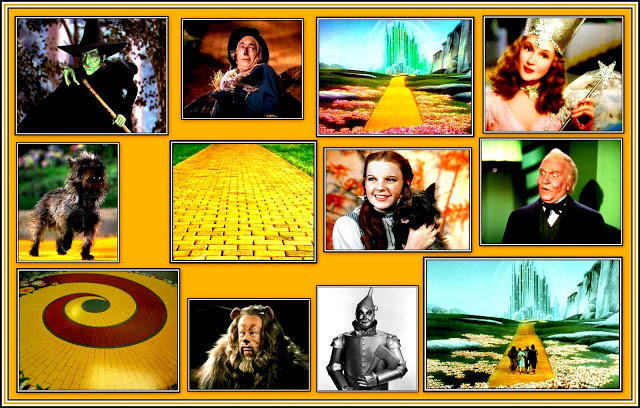 It is better to travel hopefully and well
It is better to travel hopefully and well
——oooOOOooo——
AND WHAT DID I KNOW OF SOUTH LONDON?
As I said, it was to be many years before I found myself in Isleworth again, and even that occurred purely by chance. But as the old and seemingly Chinese proverb says: it is better to travel hopefully than to arrive.
If you don’t understand this proverb, you were once not alone! The first time I heard it was when I was about thirteen years of age. We had this teacher, an old man who taught Chemistry and who had been a missionary in China and he used it pertaining to some subject or other. As I did not enjoy learning about Chemistry and I most certainly did not like this old man, I thought that Chemistry and his ridiculous proverb were dull and of no interest to me and I most certainly thought that the old man was nuts! However, for some unknown reason the proverb stayed with me over the years and I find myself quoting it to folks, who naturally raise their eyebrows to the sky whenever I used it and dismissed me and thought me nuts!
Anyway, over the years I traveled and eventually I arrived! But more of the arriving later and enough of the proverbs!
As a child, South London did not hold any interest for me, I am sorry to say. My father was born in Dulwich and raised in Camberwell and the Elephant & Castle areas. I was very much an East End Boy and never enjoyed having to go to South London to visit my father’s old haunts and the occasional family member.
It was not until 1975 that I went to Clapham Junction for the first time and I only went then as a favour to someone I worked with when living in Bern, Switzerland. I was working at the Theodor Kocher Institut (see Margaret Muller: Our Love Is Here To Stay) at the time and the Head of the Technical Staff wanted a part for some machine that he owned. Apparently the machine had been made in England and he had tracked down sellers of the part and one such seller was found in Clapham Junction. Would I go and collect it when I next went to England? And so one wet morning, I boarded a semi-fast train to the South Coast of England whose first stop was Clapham Junction Railway Station, which is a major crossroads for Southern Railway. I remember seeing Battersea Power Station once the train crossed the Thames and then Battersea Park, which I had not visited since the Festival of Britain in 1951, and not being impressed.
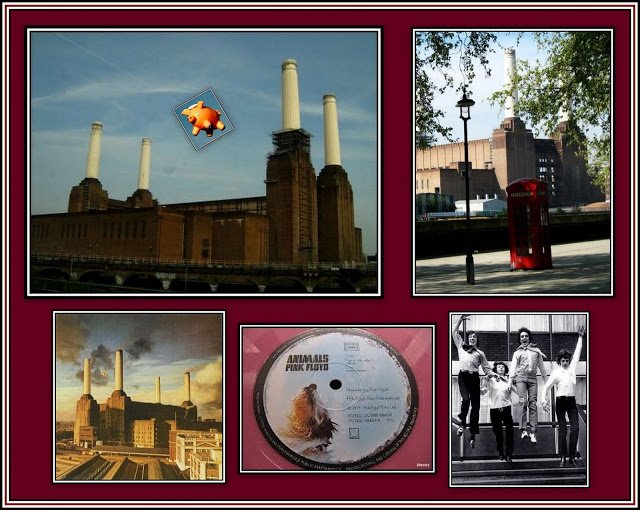 Battersea Power Station
Battersea Power Station
Bottom Left: Cover of the Pink Floyd album, Animals; Middle: copy of the disc, Animals; and
Bottom Right: The Pink Floyd, 1977
The train arrived at Clapham Junction Railway Station and again I was decidedly unimpressed. The station seemed dirty as did the streets that I had to pass through to get to the little shop where I hoped to find the part. The shop was miserable and dreary and the staff were decidedly unhelpful and had no idea what I was asking when I showed them a picture of the part. I remember that the Head of the Technical Staff in Bern gave up trying to buy the needed piece and decided to make it himself in the workshop and British exports suffered another blow!
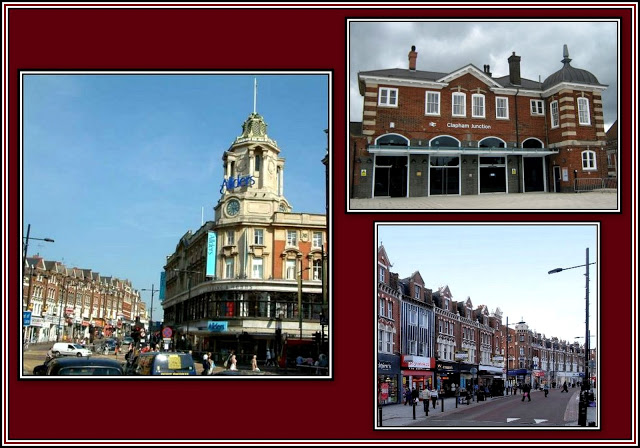 Scenes of Clapham Junction
Scenes of Clapham Junction
Left: Allders (Arding and Hobbs) with its famous capula
standing at the foot of Lavender Hill;
Right, Top: entrance to the railway station;
Right, Bottom: shops on St. John’s Hill
Prior to this first visit, all of knew of Clapham Junction was from the notoriety it had gained in the 1960s thanks to the writings of Nell Dunn. Ms Dunn is an interesting person. She came from a well-to-do family, but chose to move to Battersea in the late 1950s. Living and working in the area evidently inspired her writings, which began with a book of short stories under the title, Up the Junction. The book proved controversial as a result of its glimpse into the lives of working class people. Ms Dunn employed colloquial speech and introduced many of her readers to an unknown way of life where crime, sexual liaisons and backstreet abortion were commonplace. The book was filmed for television and directed by Ken Loach, as part of the BBC’s The Wednesday Play series. It was also made into a film, which was directed by Peter Collinson who was best known for filming the original version of The Italian Job.
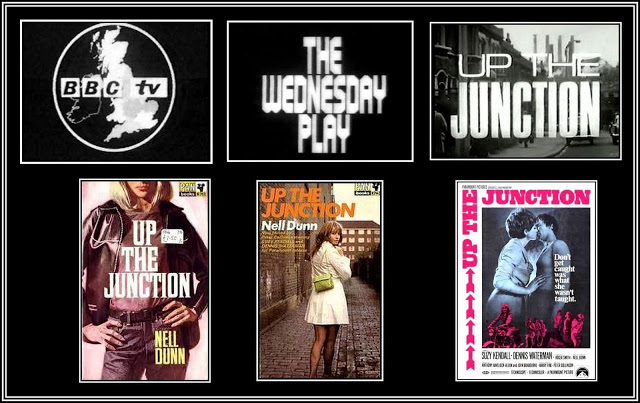 UP THE JUNCTION
UP THE JUNCTION
Book, Television Play and Film
In 1967, Ms Dunn published her first novel, Poor Cow, which was also filmed with Carol White and Terence Stamp and with Ken Loach directing and Donovan providing the music. Mr. Loach has gone on to an illustrious career in film making and continues to film the most interesting and controversial of subjects. Carol White’s fate was far more tragic unfortunately. Although she was considered a promising actress, addiction and bad life choices led to her death at 48-years of age. Terrance Stamp has enjoyed a successful film career and interestingly enough starred in the Steven Sonderbergh’s film, The Limey, which used scenes from Poor Cow and where he played the same, but now aged character introduced by Ms Dunn.
 Poor Cow – Book and Film
Poor Cow – Book and Film
The music used in the film was by Donovan, Top Right;
Terence Stamp and Carol White, Bottom Left;
Carol White, Middle; and Terrance Stamp in The Limey, Bottom Right
In 1966, Carol White and Ken Loach had caused more than a mild sensation in Britain for their work on the BBC’s The Wednesday Play, Cathy Come Home written by Jeremy Sandford, who was married to Nell Dunn at the time. The play brought to the attention of the British public the lack of sufficient and suitable housing that was still prevalent at the time. In 1953, my parents and myself were on the verge of becoming homeless and were intensely sensitive to the effects that a lack of housing caused. It was a shock to me to learn while watching the play that little had changed in the intervening time between 1953 and 1966. The play brought to the forefront poverty and what it does to people. The play showed how people who fell on hard times were forced to squat in empty houses and also revealed what life was like for those living in shelters. The play concluded with a dramatic scene where Cathy ran into a railway station in an attempt to escape the people from Social Services who were there to remove her children.
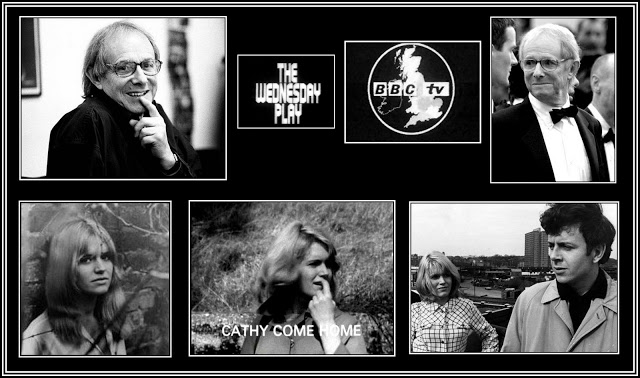 Cathy Come Home
Cathy Come Home
Top Left: Ken Loach, 1966; Top Right: at Cannes, 2007
Bottom: Carol White; Bottom Right: with Ray Brooks
Cathy Come Home was shown on the American television channel, Turner Classic Movies, a few years ago thanks to the guest presenter actor, Tim Roth. I remember that the regular presenter, Robert Osborne, was visibly shaken once the play ended and plied Mr. Roth with a multitude of questions about the social conditions of Britain.
Anyway, as I said earlier, it is better to travel than to arrive and over the years, I have traveled. And perhaps now it is time to arrive. I began to want to go to places that I had seemingly ignored in the past. And where better to begin than South London.
——oooOOOooo——
CROSSING THE RIVER
It amazes me how wrong I can be at times! For example, I always thought that South London had no real history and that it had been nothing more than a bog. I had the idea that it was not until the population of North London got to be so large that rather than risk people tumbling into the river, it was decided to drain the land on the South Bank and beyond and send folks off to live there. Well, perhaps I am exaggerating slightly, but I did think something along this line. Anyway, I had little time for anywhere south of the river and always turned nose up when I was forced to venture there!
Who knew that Clapham was not just a place with a funny sounding name, but had a history dating back to Anglo-Saxon times and that its very name means Homestead or enclosure near a hill or that Clapham High Street was once used by Roman soldiers? Who knew that King Edgar granted the land now known as Clapham to Jonas, son of the Duke of Lorraine in 965 who later was happy to be known as Jonas of Clapham? I also had no idea that William the Conqueror took control of the land once Jonas’ great-great-grandson, Arthur, made the mistake of siding against him! And who knew that Clapham was mentioned in the Doomsday Book as Clopeham with assets listed as three hides, six ploughs and a few acres of meadow!
By the 17th Century and until the 19th Century, members of the wealthy merchant class who had made fortunes in the City of London took to building large houses around Clapham Common, which was 220 acres of common land prior to 1878 when it was converted into parkland.
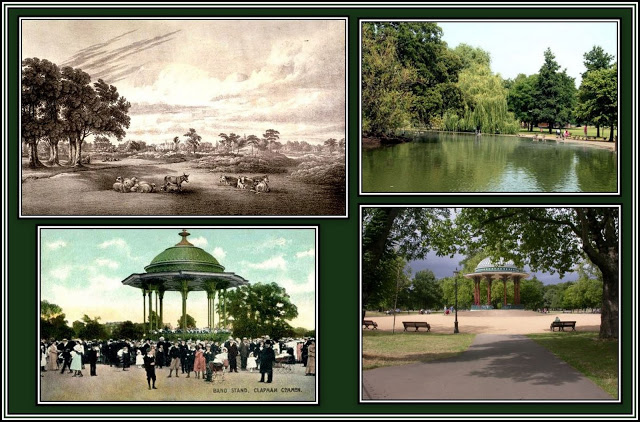 Views of Clapham Common
Views of Clapham Common
Left Top: when it was common land open to grazing animals;
Left Bottom: The Band Stand in Victorian times; &
Right, Top & Bottom: the modern park
Celebrities through this time sort respite here: Samuel Pepys spent the last years of his life here; Elizabeth Cook, wife of the celebrated Captain, lived here for many years following her husband’s death; and Edvard Grieg, Graham Greene and the architects of the Palace of Westminster (the Houses of Parliament), Sir Charles Barry, and of Westminster Cathedral, John Francis Bentley amongst others also lived here.
 Top Left: Samuel Pepys; Top Middle: Elizabeth Cook, wife of Captain James Cook, R.N.;
Top Left: Samuel Pepys; Top Middle: Elizabeth Cook, wife of Captain James Cook, R.N.;
Top Right: Sir Charles Barry; Bottom Right: John Francis Bentley;
Bottom Middle:Graham Greene; & Bottom Right: Edvard Grieg
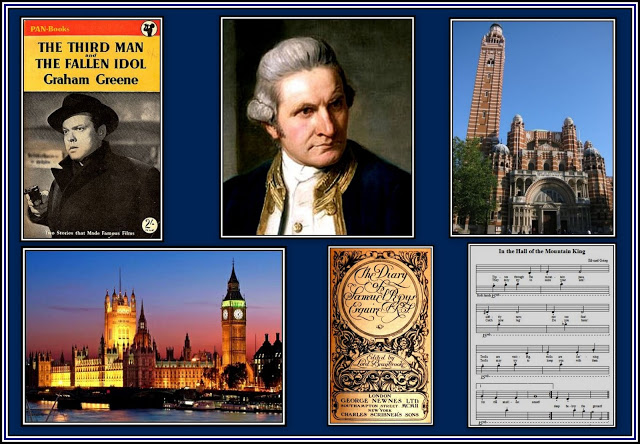 In the Hall of the Mountain King from Peer Gynt by Edvard Grieg
In the Hall of the Mountain King from Peer Gynt by Edvard Grieg
Clapham is perhaps most renown for being home to the group of upper class social Anglican reformers living around the Common during the 19th Century. This group, known as the Clapham Sect, included William Wilberforce (1759-1833) amongst others. Their interests lay in the abolition of slavery, child labour and prison reform and the Sect was responsible for the founding of The British and Foreign Bible Society, The Church Missionary Society and The Society for the Prevention of Cruelty to Animals. Their efforts were finally rewarded in 1807 with the passing of The Slave Trade Act, which brought about the banning of the trade throughout the British Empire and in 1833 with the passage of The Slavery Abolition Act, which allowed the total emancipation of British slaves. The Sect was also responsible for the founding of Freetown in Sierra Leone, which was the first British Colony in Africa and set up with the strict idea of bringing about the end of the Slave Trade. Following the passage of the anti-slavery laws, the Sect campaigned for the British Government to use its influence to bring about the end of slavery throughout the world. The Sect through writing, influence and campaigns played a great part in the development of what has become to be known as Victorian morality and the historian, Stephen Tomkins wrote that the ethos of Clapham became the spirit of the age.
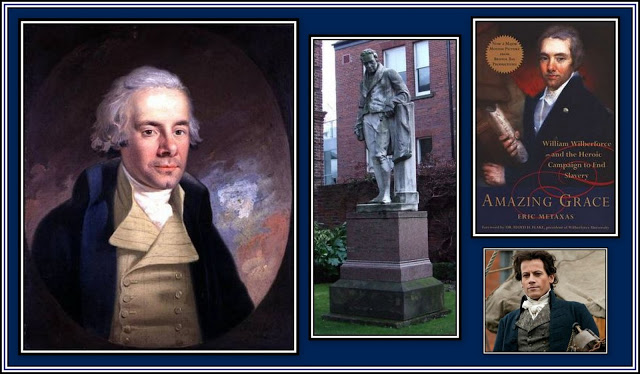 William Wilberforce
William Wilberforce
Bottom Right: Iaon Gruffudd as William Wilberforce
in the film, Amazing Grace
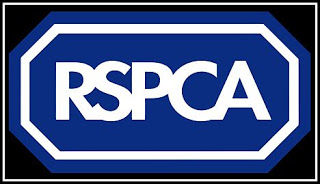 The Society was founded by
The Society was founded by
The Clapham Sect
——oooOOOooo——
Click here to go to
PART SIX: DOWN THE HILL & UP THE JUNCTION
——oooOOOooo——
Click here to return to PART FOUR: WHAT A REMARKABLE ODEON THIS IS!
——oooOOOooo——
Click here to return to THE ODEON ISLEWORTH Home Page
——oooOOOooo——
Click here to return to the TABLE OF CONTENTS
——oooOOOooo——

